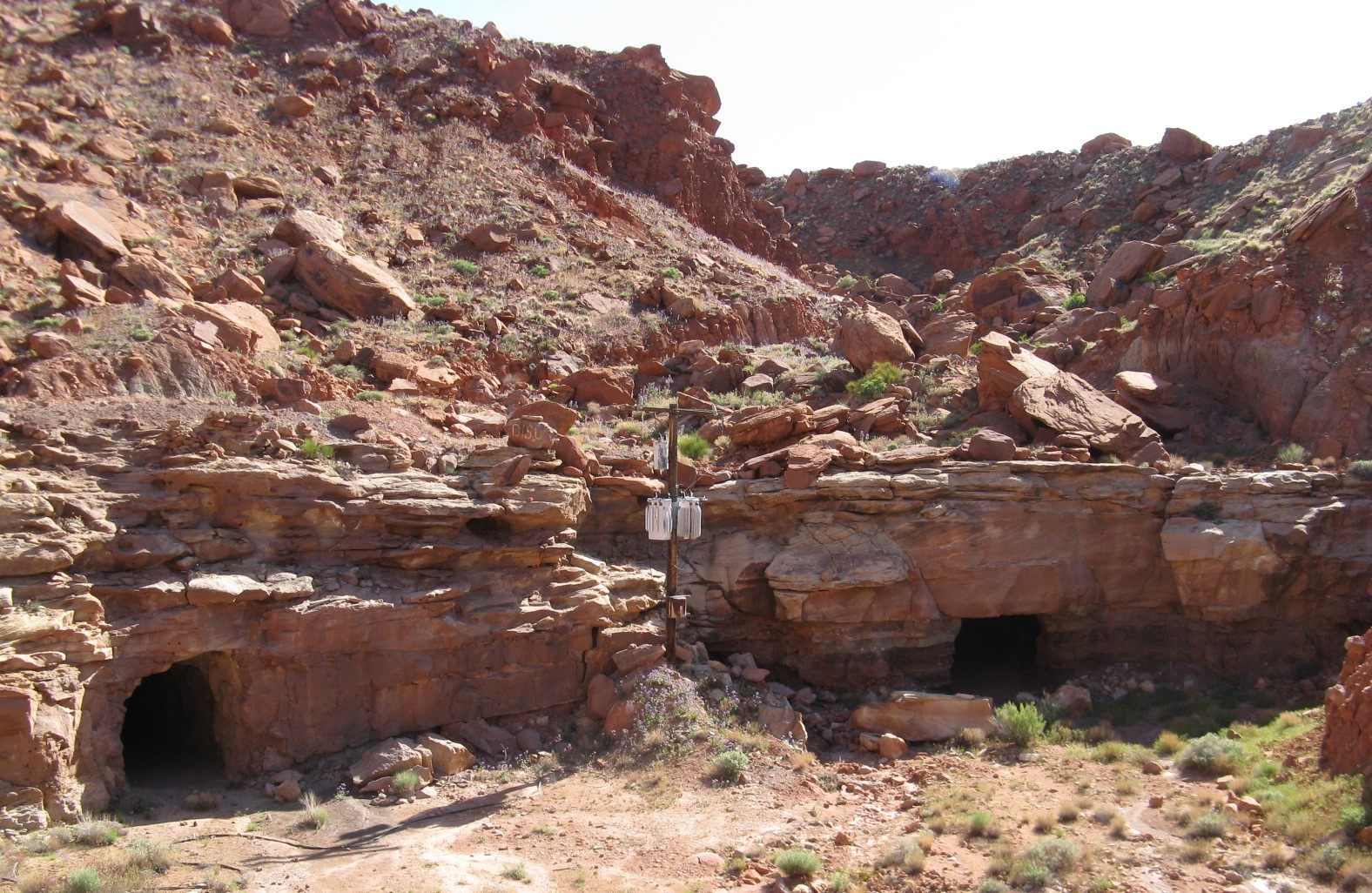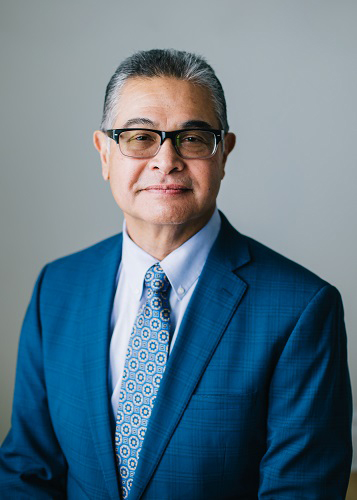The Utah Board of Oil, Gas and Mining is accepting nominations for the 2021 Environmental Excellence Awards now through Wednesday, February 19. Environmental Excellence Awards recognize operators who go above and beyond what is required by regulation. Innovations in environmental technology, environmental improvement to active mine sites, outstanding final reclamation projects, and community outreach are eligible for consideration. Nomination form and more information is available at https://www.ogm.utah.gov/includes/2021CallForNominations.pdf
EMPLOYEE HIGHLIGHT: CHRIS ROHER
Chris Roher is a senior reclamation specialist with the Division’s Abandoned Mine Reclamation Program. He started with the program as a graduate school intern in 1982 and moved to a full-time division employee in 1983.

As a senior reclamation specialist, Chris manages projects from the initial abandoned mine inventory to construction and closure. This planning process can include budget estimating, National Environmental Protection Act (NEPA) compliance, procurement of construction and professional services, construction inspection, and contract management. Chris has been project manager for 49 construction contracts totaling $9.4 million, including reclamation at 100 coal mine sites an installation of over 1,880 non coal closures.
Chris enjoys his work for numerous reasons including being able to hike and explore areas of the state. With Utah’s vast mining history, his work has taken him every corner of the state. He is also proud that the AMR has an exemplary record of thoughtful project design and execution in sensitive environments that has earned the respect of land managers.
Chris has a Bachelor of Science degree in Zoology/Environmental Studies from Butler University and a Master of Science degree in Environmental Sciences from Indiana University.
When Chris is not working, he enjoys watching independent films, world travel, and global cuisine and music.
ABANDONED MINE RECLAMATION PROGRAM RECEIVES NATIONAL AWARD

The Utah Division of Oil, Gas and Mining Abandoned Mine Reclamation Program received the 2020 National Association of Abandoned Mine Land Programs (NAAMLP) Hardrock Physical Safety Reclamation Award for the 2019 Red and Fry Canyon abandoned mine closure project in San Juan County.
Funded by the Bureau of Land Management (BLM) and Office of Surface Mining Reclamation and Enforcement (OSMRE), 62 hazardous mine openings in the Red and Fry Canyon uranium districts on BLM land were closed using backfills, masonry walls, polyurethane foam plugs, and fabricated steel gates and grates. In addition, 12 electrical transformers dating to the 1950 – 60s were removed and disposed of from two mines.

Twelve of the sites are eligible for listing in the National Register of Historic Places because they provide important information about uranium mining associated with the Cold War uranium boom. Closure methods and activities were carefully managed so as not to adversely affect these historic properties and to retain the historic landscape.
This project is the first construction phase of a 400 square mile project initiative that addresses abandoned uranium mines in the Red Canyon, White Canyon, Fry Canyon, and Deer Flat mining districts.
Historically, the bulk of the mining activity and production in the project area occurred when the U.S. Atomic Energy Commission was purchasing uranium ore for defense-related activities between 1947 and 1970. After the federal support ended, most mines were abandoned. However, several uranium mines in Red Canyon were active as of 1980 and one permitted mine remains today.

The Red and Fry Canyon Project is a showcase example of interagency cooperation and collaboration to protect public safety while protecting the environment.
RECIPIENT SELECTED FOR 2020 EMPLOYEE ACHIEVEMENT AWARD

Seth Button, archaeologist and project manager for the Abandoned Mine Reclamation Program (AMRP), received the 2020 Utah Division of Oil, Gas and Mining Employee Achievement Award.
He was nominated by his peers for his service to the Division and the State of Utah. Seth is a wonderful resource for the Division and helps not only the AMRP, but other Division programs needing assistance with cultural preservation and coordination. He is very knowledgeable about Utah and often helps improve the quality of the cultural reports staff receive from operators when there are inconsistencies or questions. He also works great in a team environment where he often provides valuable feedback to state and federal agencies and stakeholders.
Seth has been with the Division for a year and a half. As a project manager, he is responsible for leading projects from the identification of abandoned mines through compliance with state and federal regulations to construction/reclamation. As an archaeologist, he helps ensure that all program projects comply with applicable state and federal laws governing the treatment of cultural resources.
Seth is a great employee and representative of the Division. Congratulations Seth!
EMPLOYEE HIGHLIGHT: WAYNE WESTERN

Wayne Western is a mining engineer with the Division’s Minerals Program. He started with the Coal Program in 1991 and moved to the Minerals Program in 2007.
He is the lead for Carbon, Emery, Juab, Wayne and eastern Garfield counties. Wayne conducts technical reviews for small mines and exploration projects as well as engineering and bond review for large mines. He provides technical and regulatory support to operators ranging from calculating reclamation cost estimates to assistance in filling out small mine permits. He conducts routine inspections of mines and exploration projects ensuring operators are mining within their permits.
In the Minerals Program he’s known as Bond, James Bond because he helps establish the current bonding practices and procedures used by both the coal and minerals programs and drafts technical directives on how bonds are to be calculated.
Wayne works with a number of operations with the most significant mine in his area being the Materion beryllium mine west of Delta. Materion is the world’s only primary producer of beryllium which is used in many high tech applications that make the modern world possible. He ensures mining is done in a way that it protects public safety and preserves the environment.

Wayne says the best thing about his job is his fun, professional and helpful co-workers. He also likes being able to visit many out-of-the-way areas including the Henry Mountains and west desert.
He has Bachelor of Science degrees in geology and mining engineering and a Master of Science in mining engineering.

In Wayne’s leisure time he enjoys traveling with his wife to visit his children who live in the United Kingdom and takes annual trips to England and Scotland. He is a hunter education instructor and has been honored twice as Instructor of the Year. His wife is a fantastic baker and he enjoys reaping the benefits.
ABANDONED MINE RECLAMATION PROGRAM UPCOMING PROJECTS
The Utah Division of Oil, Gas and Mining Abandoned Mine Reclamation Program (AMRP) has five upcoming abandoned mine closure projects scheduled to begin in late summer/early fall of 2020. Closures are designed to protect features of historic significance and animal habitat, while protecting the public from injuries or death. Abandoned mines are hazardous because they are no longer maintained, lack ventilation and may collapse. All of the work is performed with approval from landowners and in coordination with land management agencies. Below is a summary of several of these projects.

The Willard Peak Project proposes to safeguard approximately 50 abandoned hardrock mine openings on the west face of the Wellsville and Wasatch mountain ranges in Box Elder, Weber and Davis counties. All the openings are located on private land and lands administered by the U.S. Forest Service. The project will secure abandoned mine openings using earthen backfills, steel grates, concrete block walls, and polyurethane foam plugs.

The Buckmaster-OIG Project is located in Emery County, north of I-70 and east of the East Reef of the San Rafael Swell in Buckmaster Draw. The project will close approximately 40 abandoned uranium mine openings within a portion of the San Rafael River mining district. All the mines in the project are located on lands administered by the Bureau of Land Management (BLM) and have been identified as high priority hazards to public safety by a directive from the U.S. Office of Inspector General (OIG). A second phase is planned to address the remaining abandoned mines in the district. Closure methods include earthen backfills, steel grates, and concrete block walls.

The White Canyon and Deer Flat Project proposes to safeguard 83 abandoned uranium mine openings and 30 vent holes in San Juan County. All the openings are located on public lands administered by the BLM and State Institutional Trust Lands Administration (SITLA). Access to the mines will be on existing routes designated in the BLM Monticello Travel Management Plan, however, some work areas will require temporary use of old mine roads, which are not designated routes. Closure methods include earthen backfills, steel grates, polyurethane foam plugs, and concrete block walls.
For additional information on these or other AMRP projects, visit https://www.ogm.utah.gov/amr/index.php.
NEW MEMBER APPOINTED TO THE UTAH BOARD OF OIL, GAS AND MINING

La Vonne J. Garrison has been appointed to the Utah Board of Oil, Gas and Mining. She represents oil and gas interests.
Ms. Garrison recently retired as Assistant Director for Oil and Gas at the Utah School and Institutional Trust Lands Administration (SITLA) where she had been employed since 2000. For 20 years prior to that position, she was the Regional Land Manager for a Rocky Mountain oil and gas company headquartered in Salt Lake City.
Her past oil and gas experience also includes work as an independent landman, a geologic transcriber and work with a petroleum engineer. Ms. Garrison has a B.A. from the University of Montana at Missoula. She is a member of the American Association of Professional Landmen (AAPL), a past officer of the local chapter of AAPL, and a retired member of the Public Lands Committee for the Interstate Oil and Gas Compact Commission (IOGCC).
EMPLOYEE HIGHLIGHT: TODD MILLER
Todd Miller is a biologist with the Coal Program and oversees the active coal mine operations in the state. He has been with the program for 2.5 years.
He ensures coal mine operators are in compliance with all applicable laws and regulations relating to biology including the Endangered Species Act, Migratory Bird Treaty Act, Bald and Golden Eagle Protection Act and the Surface Mining Control and Reclamation Act (SMCRA).
His position makes certain that active coal operations are able to function and fulfill their role in energy development without creating undue negative environmental effects to wildlife and vegetation. He also ensures that when coal mines are reclaimed, they are done so in a way that enables the land to fulfill its highest and best post-mining land use. Usually that means the mine is reclaimed in a way that is best suited to encourage and aid wildlife but it can also be for grazing, recreational or other uses.
The best thing Todd likes about his job is the people he works with and the time he gets to spend outdoors.

Seeing a coal mine that has produced untold amounts of energy for the state in its lifetime and is now completely reclaimed and blended in to the point of being unnoticeable is pretty good too.
Todd went to school at Dixie State University where he graduated with a Bachelor of Science in Biology as well as a Bachelor of Science in Human Communication. Prior to his position with the Coal Program, he spent 2.5 years working as a contractor for the National Park Service and the Bureau of Land Management in southern Utah and Arizona.
He is the proud father of three little girls ages 1-7. When Todd isn’t working, he enjoys getting outdoors as much as possible whether that is hiking, canoeing, riding motorcycles, nature photography or playing sports. He also likes to dabble in woodworking and outdoor cooking.

